There are numerous proprietary sharpening systems out there. We cannot cover all of them, so we will cover the most popular.
V Rod System
A V rod system is a very simple set up. It features two sharpening rods, angled in a V. They can come with rods of different coarseness to get a really fine edge.
Normally, they sit in angled holes on a wooden base – often with multiple holes at different handles for sharpening different types of blade.
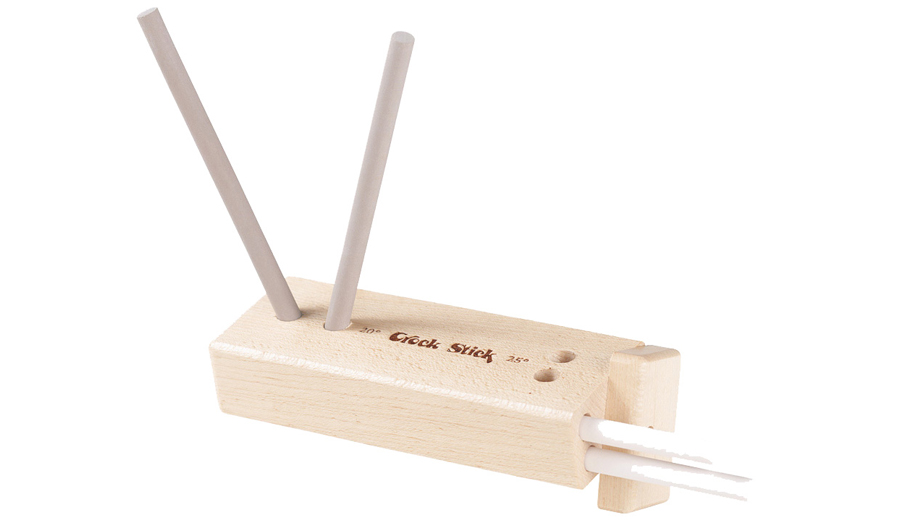
These kind of sharpening systems are incredibly easy to use.
They use a similar technique to using a sharpening steel/rod.
Set Up
Always begin by placing the turn box on a stable and flat surface at a comfortable working height.
One Stage Sharpening
Step 1
Choose the type of rods and the angle that you wish to sharpen with (normally a choice of 20 or 25 degrees) by placing the sharpening rods in the appropriate guide holes.
Step 2
Hold the base firmly with your non-dominant hand. Make sure your fingers are as far away from the rods as possible while maintaining a firm, controllable grip on the base.
Step 3
With the knife in your dominant hand, place the heel of the blade (closest to the handle) an inch or more below the top of one of the rods.
Step 4
Holding the blade straight up and down (perpendicular to the work surface), draw the blade down the rod and towards you, moving towards the tip of the knife. The motion is similar to slicing bread.
Step 5
Repeat this action on the other rod for the other side of the edge.
Step 6
Continue alternation from rod to rod until you have achieved the desired sharpness.
Two Stage Sharpening
Step 1
Begin by placing the rods in the 20 degree angle holes and follow the sharpening instructions as listed in the one stage sharpening above, but do not polish/finish the edge, use only 10-12 strokes on each rod. This is to thin the blade’s edge.
Step 2
After thinning the blade’s edge, move the rods to the 25 degree angle holes for the second stage sharpening to finish the edge. Simply follow the same technique used before. This will produce a durable and sharp compound bevel on the blade.
The V rod system is quick and efficient and results in a good edge that should be easy to maintain.
Multiple different types of V rod systems exist, from designs to be used on a tabletop to small pocket versions which work on the same principle.
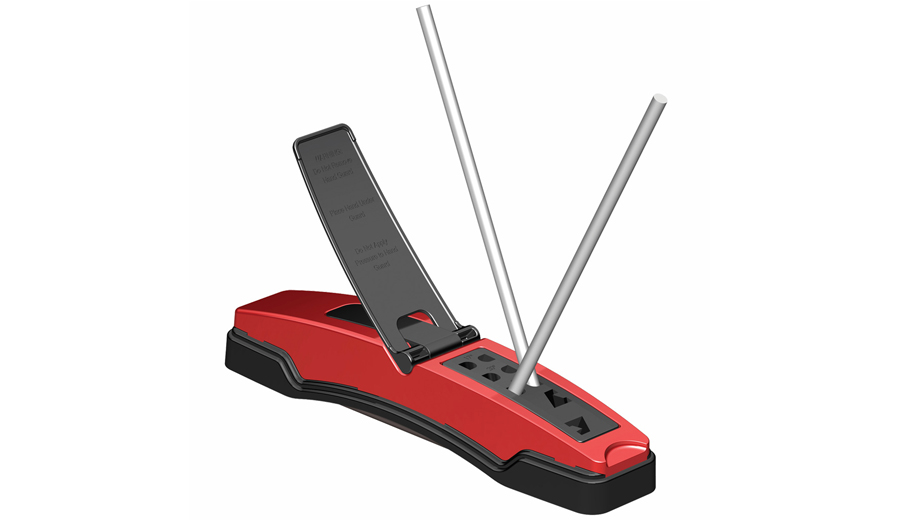
Controlled Angle Sharpening Systems
There are a few variations on this method of sharpening, but they all use the same principle, which is making sure that the angle the sharpener hits the blade edge at is fixed and consistent.
Normally this involves clamping the blade, and then using guide rods to angle the sharpener correctly against the blade.
In effect, it is a similar action to using a whetstone, except that you don’t have to be concerned about getting the angle correct.
The advantage with this method is that the angle will be the same every time.
They often have multiple stages of coarseness included so you are able to start with a coarser finish moving up to a very fine one.
Here are some examples of controlled angle sharpening systems.
Lansky Controlled Angle Sharpening System
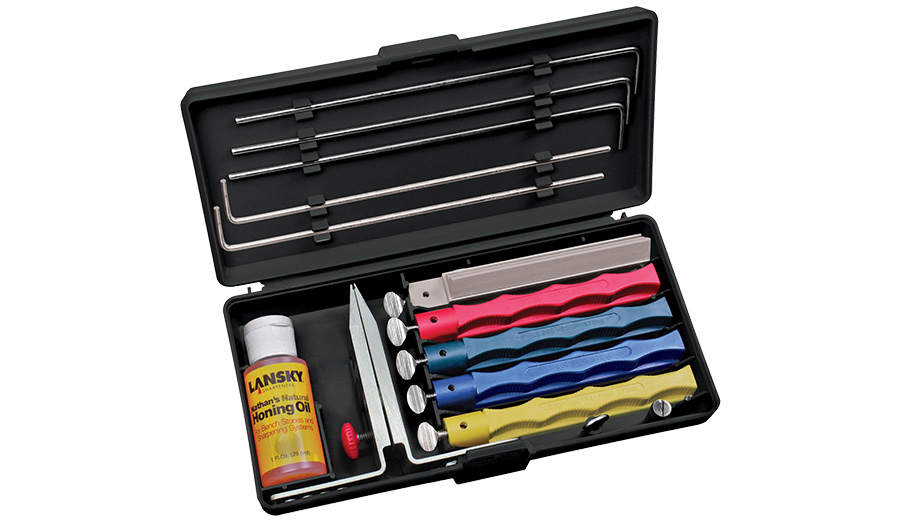
With the Lansky sharpening system, the blade is held securely in a clamp. A guide rod is then attached to the required sharpening stone or ‘honing stone’ at one end and the other end is placed inside one of the holes in the clamp. The clamp has holes at different positions for different angles. The stone is then rubbed over the length of the blade edge.
Then, the clamp is flipped over, and the same steps are repeated on the other side of the blade.
DMT Controlled Angle Sharpening System
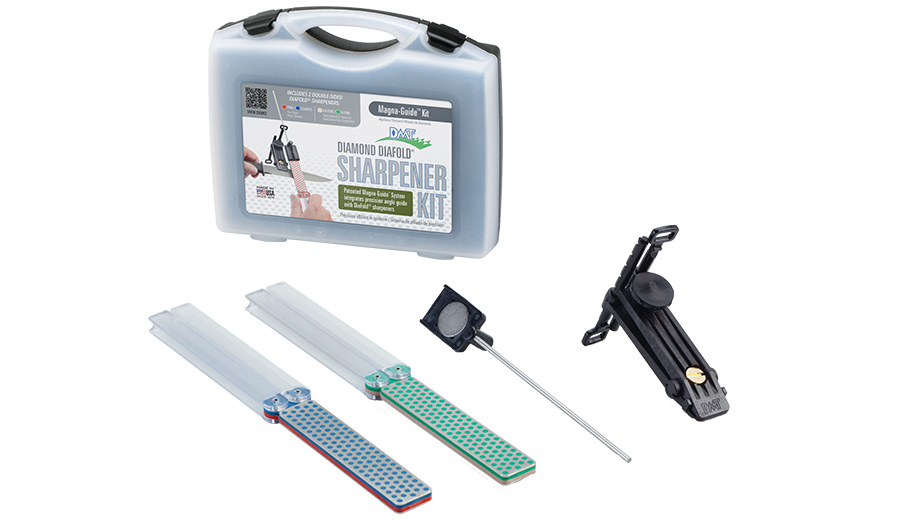
The DMT sharpening kits work on the same principle, but instead of the blade being in a fixed position and the sharpening stone rubbing along the edge, the sharpening stone is in a fixed position and the knife rubs across the stone.
Either of these two systems offer a very precise, multi-stage sharpening method which give a controlled, highly polished edge.
Best Sharpening Systems
Lansky Deluxe Sharpening System
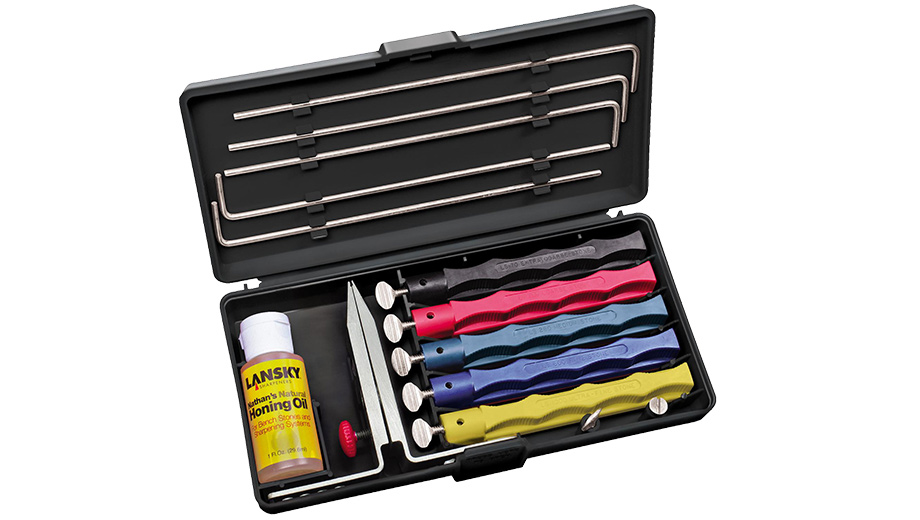
Includes: Extra Coarse, Coarse, Medium, Fine & Ultra-Fine Hones, Multi-angle Knife Clamp, Nathan’s Honing Oil & 5 Guide Rods (plus spare clamp screw and guide rod thumb screw)
Extra Coarse Hone
For beveling and reshaping of extremely dull and deteriorated cutting edges
Coarse Hone
For producing the fastest cutting edge on all types of knives for home use, woodcarvers, sportsment, butchers and commercial knife sharpeners
Medium Hone
Excellent for keeping a fine sharp edge on hunting, fishing, kitchen & pocket knives
Fine Hone
Produces a razor-sharp edge
Ultra-Fine Hone
A good finishing stone for sharpening high quality cutlery
Lansky 4 Rod Deluxe Turn Box Sharpener
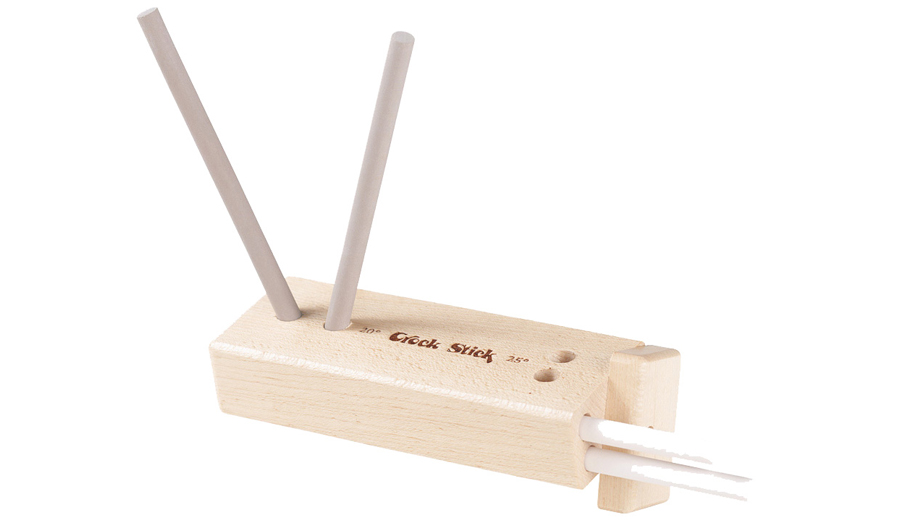
This 2-Stage Sharpening System features a hardwood turnbox with internal rod storage in the base and four 5″ long alumina ceramic rods (2 medium, 2 fine).
DMT Diafold Magna-Guide Kit with EE/E/F/C grits in Sturdy Case
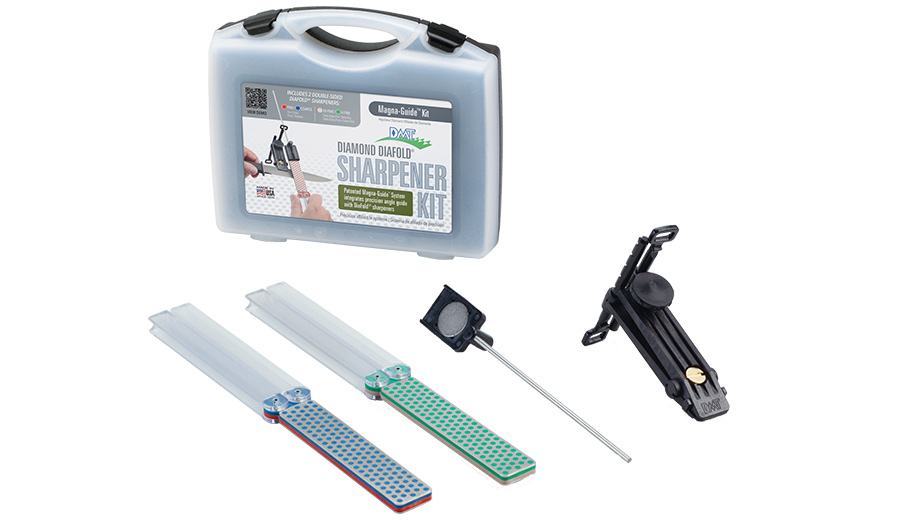
The MAGKIT-4 Magna-Guide kit offers portable sharpening using 2 Double Sided Diafold sharpeners that provide 4 diamond grits.
The Aligner Blade Guide (ABG) provides 7-Angle adjustability for the right edge every time and the MAG – Magnetic Angle Guide – joins the two!
Lansky Diamond/Ceramic Four Rod Turnbox Sharpener
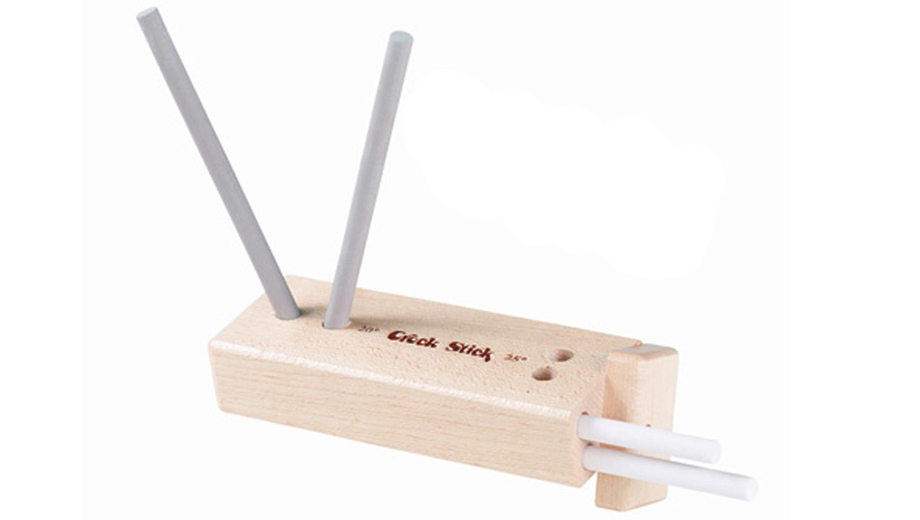
The Turn Box family is a very stable and compact knife sharpening system. It works well in the kitchen and it quickly breaks down for storage in a drawer. The turn box family of knife sharpeners is also great for outdoorsmen on the go because it is lightweight and stores easily into a backpack. It only takes a few swipes to maintain an edge (a bit more if you have a really dull knife).
There are two pre-set knife sharpening angles in the wood block 20 degree & 25 degree
25 Degrees – This is used for most kitchen knives and provides a sharp, durable edge.
20 Degrees – This is used for those desiring a very sharp edge. Some examples would be for filet knives or cutting tomatoes. Lower degrees result in sharper knives, but require more regular maintenance.
This 2-Stage Knife Sharpening System features a hardwood turnbox with internal rod storage in the base, two 5″ long medium diamond rods, and two 5″ long fine ceramic rods.
Lansky Master’s Edge 5 Rod Sharpener
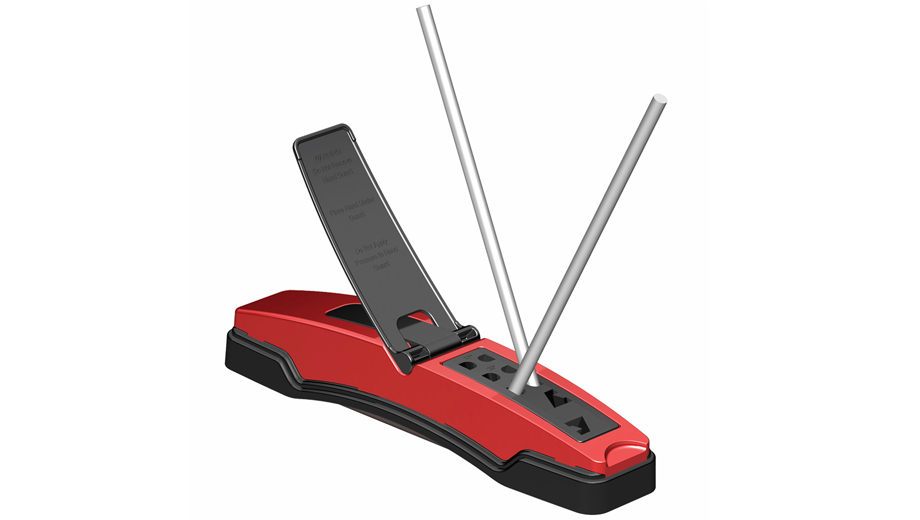
The Master’s Edge system includes a pair of both medium (grey) and fine (white) ceramic rods for sharpening and professional grade polishing. Also include in the system is the new 3-radius ceramic triangular rod which will sharpen all types of serrations as well as awls and fishing hooks.
In addition to providing three of the most common sharpening angles 17, 20, and 25 degrees, the Master’s Edge also features a rubberised non slip base, easy snap-in rod storage and an integrated hand guard.
Sharpening systems can offer the best of all worlds – multi level sharpening for different stages of blade edge sharpness under controlled and repeatablbe conditions.
If you are going to be sharpening on a regular basis, sharpening systems can be an effective and efficient choice.

